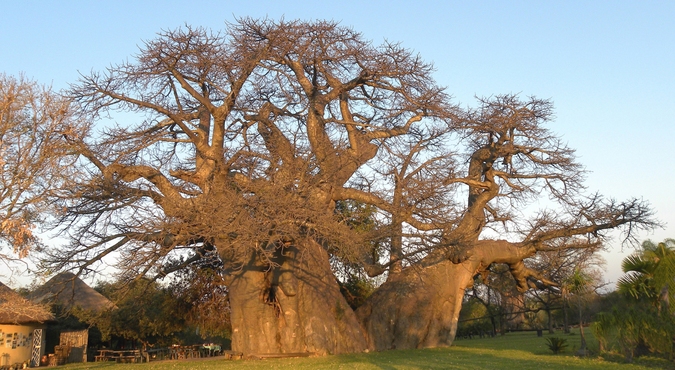
Written by Ryan Mizzen
Research released earlier this month showed that some of the largest and oldest baobab trees in Africa died within a 12 year period. For trees that have lived for millennia to suddenly succumb over such a short space of time and in different countries, suggests that a major cause may be to blame.
The research paper in Nature Plants listed climate change as a potential suspect, but also noted that further research was necessary. Recently I interviewed Adrian Patrut from the Babeș-Bolyai University in Romania, who co-authored the research paper. He explained that “southern Africa is one of the fastest-warming areas worldwide. We suspect that an unprecedented combination of temperature increase and extreme drought stress were responsible for these demises”.
Taking one example of the Chapman’s baobab in Botswana, Patrut went on to explain that it produced leaves and flowers well before the rainy season started, depleting its water reserves so that it wasn’t able to support itself and collapsed in the space of a day. He also noted that the rainy season had started later than usual that year. These weather extremes and shifting rainfall patterns are set to become the new normal as a result of climate change, putting more of our flora and fauna at risk.
The reason why the loss of these baobabs is so concerning is that these trees are renowned for being particularly difficult to kill. When the inside of baobabs is burned by fire, they’ll continue growing. When the bark is stripped away by large mammals such as elephants, they’ll grow new bark. For climate change to have killed them sends a very worrying message.
When we lose our great trees, we also lose part of human history. Baobabs are regarded as sacred trees by certain tribes and used for ceremonies and other tribal traditions. In West Africa, important meetings would take place beneath baobab trees to resolve conflicts. When these trees go, so do the customs and folklore that have grown with them.
Climate change is one of the biggest threats to life on this planet, and there is a sad irony that baobabs which are known as ‘the trees of life’, are amongst the first casualties. Unless we wish to see more species heading for a similar fate, then we need to urgently reduce anthropogenic greenhouse gas emissions to meaningfully tackle climate change. We stand to lose more than we may realise if we fail.
To comment on this story: Login (or sign up) to our app here - it's a troll-free safe place 🙂.![]()






